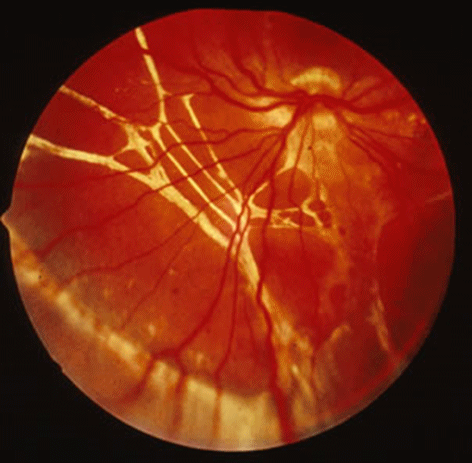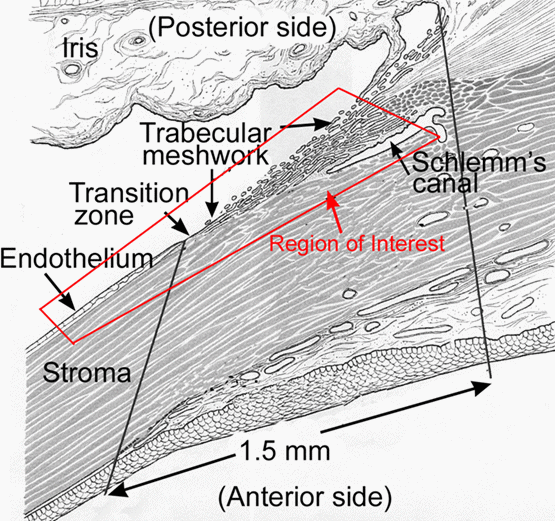Research
Research Overview
Dr Carl Sheridan’s research addresses cellular mechanisms that drive glaucoma and ocular wound healing. His work focuses on trabecular meshwork dysfunction in primary open-angle glaucoma, developing advanced 3D in vitro models and organ culture systems to study disease progression. He explores stem cell-based therapies and biomaterials to regenerate the outflow pathway and restore intraocular pressure control.
Carl also investigates retinal wound healing in conditions such as age-related macular degeneration (AMD) and proliferative vitreoretinopathy (PVR). This research is underpinned by retinal pigment epithelium biology and aims to inform regenerative medicine strategies for vision restoration.
His studies combine cell culture, imaging, and omics technologies, supported by collaborations in biomedicine and bioengineering. The goal is to translate laboratory findings into therapies that prevent sight loss.
Research Interests
1. Glaucoma and Trabecular Meshwork Biology
Carl studies the cellular and molecular mechanisms underlying trabecular meshwork dysfunction in primary open-angle glaucoma. His team develops 3D in vitro models and organ culture systems to replicate disease conditions. Research includes stem cell-based therapies and biomaterial scaffolds to regenerate trabecular meshwork and restore aqueous outflow.
2. Retinal Wound Healing and RPE Cell Biology
This area focuses on wound healing processes in retinal diseases such as AMD and PVR. Carl investigates how RPE cells respond to injury and degeneration, aiming to develop cell-based and tissue-engineered solutions for retinal repair.
3. Tissue Engineering and Regenerative Medicine
Carl integrates biomaterials, stem cells, and tissue engineering to design transplantable cell layers and ocular models. These approaches support regenerative strategies for glaucoma and retinal disorders, bridging laboratory research and clinical application.
PhD Recruitment areas
glaucoma research, trabecular meshwork, primary open-angle glaucoma, retinal pigment epithelium, ocular wound healing, AMD, PVR, stem cell therapy, induced pluripotent stem cells (iPSCs), tissue engineering, regenerative medicine, biomaterials, ocular drug delivery, vision science, ocular cell biology, ophthalmology, bioengineering, biomedicine, translational eye research, PhD in glaucoma, PhD in regenerative medicine, PhD in tissue engineering, PhD in bioengineering, PhD in biomedicine, postgraduate research in ocular disease.

Retinal Pathologies and Treatments
A multidiscipline approach to understand the cellular mechanisms of retinal wound healing which occurs due to a variety of blinding retinal disorders (e.g. Age-related Macular Degeneration, Proliferative Diabetic Retinopathy). A number of projects from bench to beside are continually evolving to enhance our knowledge to combat these blinding conditions.

Cornea and Trabecular Meshwork
Both the corneal endothelium (CE) and trabecular meshwork (TM) cells are special cell types in the eye that do not self-replace when lost in ageing or diseases, such as Fuch’s endothelial dystrophy and primary open angle glaucoma (POAG) (Yu et al., 2015). Understanding the disease mechanisms involved in both cell loss and potential cell replacement approaches are key areas of study within our group.
Research groups
Research grants
201381564 BILIR
TURKISH EMBASSY (LONDON)
October 2018 - September 2021
Optimisation of PET cell infiltration of trabecular meshwork
INTERNATIONAL GLAUCOMA ASSOCIATION (UK)
July 2016 - February 2019
Investigating the role of microRNAs in glaucoma pathogenesis.
FIGHT FOR SIGHT (UK)
December 2014 - August 2016
Histopathological evaluation of a new therapy for Diabetic retinopathy
DIABETES UK (UK)
August 2007 - January 2008
Research Eye Bank Project
FOUNDATION FOR THE PREVENTION OF BLINDNESS (UK)
September 2012 - July 2017
Research Fellow.
FOUNDATION FOR THE PREVENTION OF BLINDNESS (UK)
October 1998 - September 2002
Development of a New Strategy to Treat Age-Related Macular Degeneration.
FOUNDATION FOR THE PREVENTION OF BLINDNESS (UK)
September 2008 - August 2009
Identification and propagation of stem cell-rich sites of the conjuctiva.
THE GUIDE DOGS FOR THE BLIND ASSOCIATION (UK)
August 2007 - August 2012
ICE of human ocular surface (corneal and conjunctival) stem cells
ROYAL LIVERPOOL AND BROADGREEN UNIVERSITY HOSPITALS NHS TRUST CHARITABLE FUNDS (UK)
October 2014 - September 2015
Dunhill Research Fellowship: Cell transplantation and the treatment of age-related macular degeneration.
FOUNDATION FOR THE PREVENTION OF BLINDNESS (UK)
August 2001 - January 2005
Micro-Plasma Technology for Controlling Cellular Interactions on Medical Implants
ENGINEERING & PHYSICAL SCIENCES RESEARCH COUNCIL
September 2009 - May 2013
Stem cells for the trabecular meshwork
INTERNATIONAL GLAUCOMA ASSOCIATION (UK)
April 2012 - December 2018
"Smart" targeting of anti-scarring agents in an in vitro model of retinal wound healing.
BRITISH COUNCIL FOR PREV OF BLINDNESS (UK)
December 2003 - November 2009
Endothelial cell and retinal pigment epithelial cell (RPE) interaction in choroidal neovascularization (CNV): action and reaction.
BRITISH COUNCIL FOR PREV OF BLINDNESS (UK)
June 2001 - September 2003
Foundation Research Assistant
FOUNDATION FOR THE PREVENTION OF BLINDNESS (UK)
January 2007 - January 2009
Iris Pigment Epithelial Cell Transplantation and Age Related Macular Degeneration.
FIGHT FOR SIGHT (UK)
October 2002 - September 2005
IPE cell transplantation
THE UNIVERSITY OF HONG KONG (CHINA)🚩
June 2009 - May 2011
Investigation of a new cell treatment for Age-Related Macular Degeneration.
HELP THE AGED
October 2005 - December 2007
Surgical instruments and procedure for cell transplantation in AMD
MACULAR DISEASE SOCIETY (UK)
December 2011 - May 2013
Progenitor cell treatments in Age Related Macular Degeneration (AMD).
VIVENSA FOUNDATION (UK)
January 2006 - December 2009
Transplantation of IPE beneath the neuroretina in ARMD.
ROYAL LIVERPOOL AND BROADGREEN UNIVERSITY HOSPITALS NHS TRUST (UK)
September 2003 - August 2006